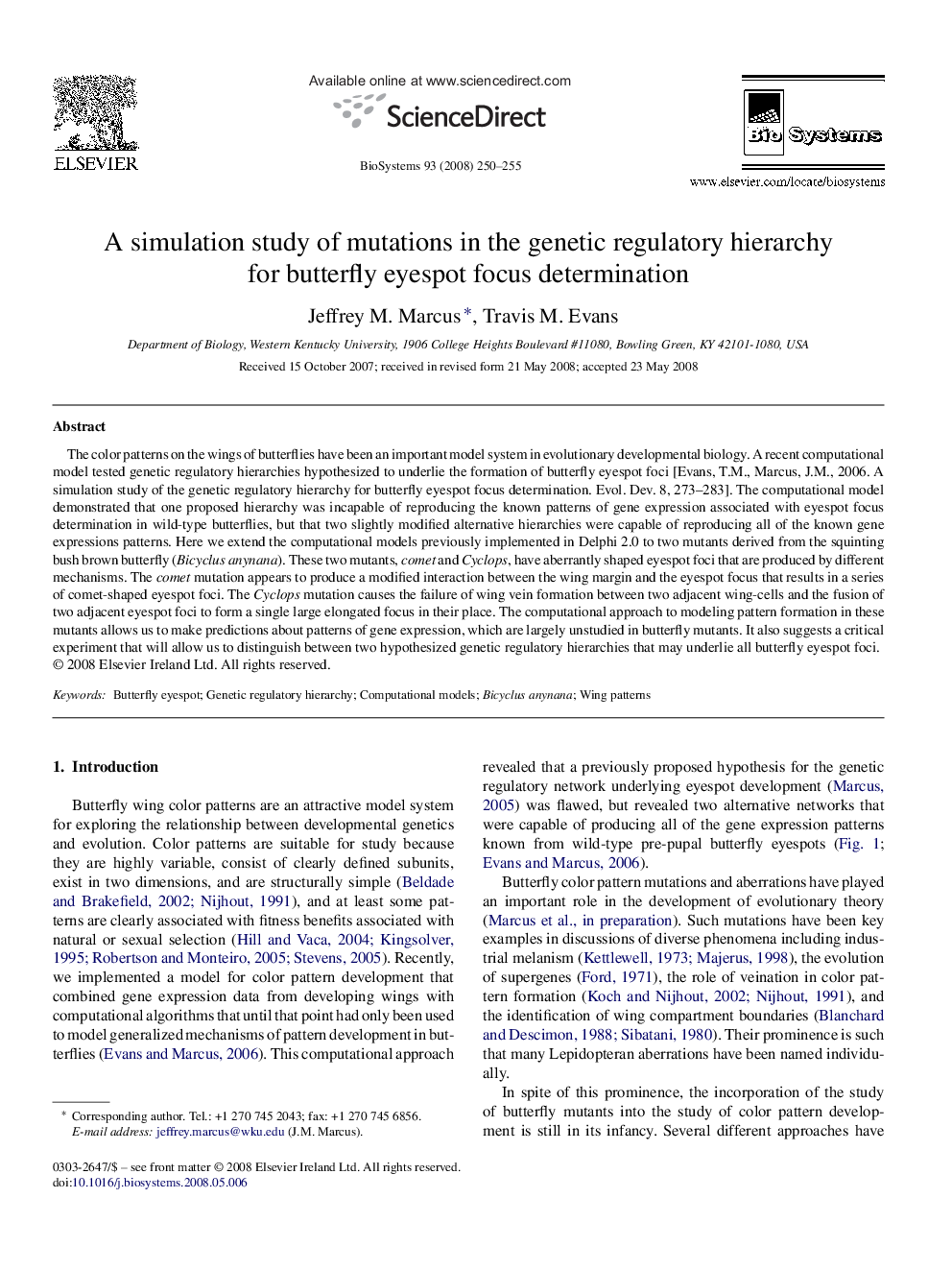| Article ID | Journal | Published Year | Pages | File Type |
|---|---|---|---|---|
| 2076701 | Biosystems | 2008 | 6 Pages |
The color patterns on the wings of butterflies have been an important model system in evolutionary developmental biology. A recent computational model tested genetic regulatory hierarchies hypothesized to underlie the formation of butterfly eyespot foci [Evans, T.M., Marcus, J.M., 2006. A simulation study of the genetic regulatory hierarchy for butterfly eyespot focus determination. Evol. Dev. 8, 273–283]. The computational model demonstrated that one proposed hierarchy was incapable of reproducing the known patterns of gene expression associated with eyespot focus determination in wild-type butterflies, but that two slightly modified alternative hierarchies were capable of reproducing all of the known gene expressions patterns. Here we extend the computational models previously implemented in Delphi 2.0 to two mutants derived from the squinting bush brown butterfly (Bicyclus anynana). These two mutants, comet and Cyclops, have aberrantly shaped eyespot foci that are produced by different mechanisms. The comet mutation appears to produce a modified interaction between the wing margin and the eyespot focus that results in a series of comet-shaped eyespot foci. The Cyclops mutation causes the failure of wing vein formation between two adjacent wing-cells and the fusion of two adjacent eyespot foci to form a single large elongated focus in their place. The computational approach to modeling pattern formation in these mutants allows us to make predictions about patterns of gene expression, which are largely unstudied in butterfly mutants. It also suggests a critical experiment that will allow us to distinguish between two hypothesized genetic regulatory hierarchies that may underlie all butterfly eyespot foci.
